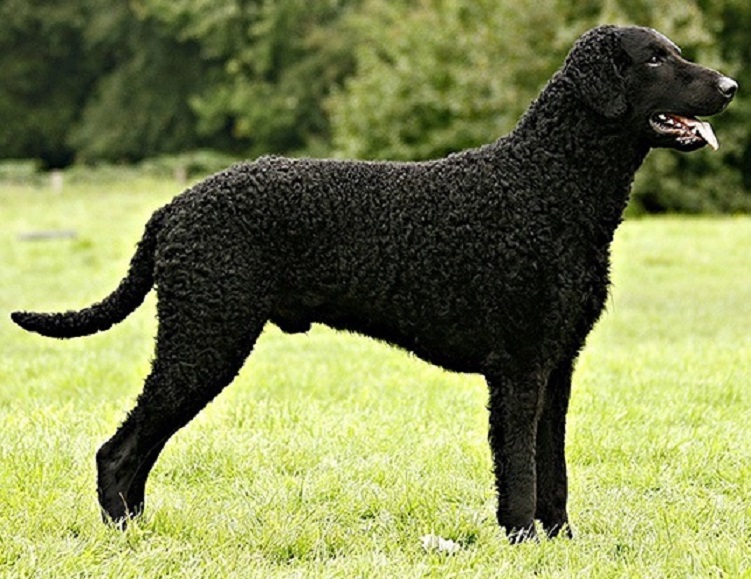
Curly Coated Retriever

Navigate through the tabs
Navigate through the tabs below to view the breed's info of your interest.
The breed's info is divided in four sections; namely:
the breed's history ,
the breed's main stats ,
the dog's potential health issues
and finally, how the breed scored in 26 different categories.
All the above information should give you a respectively good overview for the dog of your interest.
Dog Breed's Main Info
The Breed's History:
Little is known about the Curly's origin. He may be descended from now-extinct English Water Spaniels and retrieving setters as well as other retriever-type dogs, including Poodles which, essentially, are retrievers themselves. Whatever his makeup, his first appearance in the show ring was in England in 1860, and he is thought to have been the first dog used for serious retrieving.
He was especially prized by gamekeepers, who appreciated his hunting ability, courage, and perseverance. The Curly's popularity waned, however, as the Labrador became a favorite with hunters. The war years didn't help. After World War I, in 1919, only five Curly-Coated Retrievers were registered. The breed began to recover but again almost died out during World War II.
Curly-Coated Retrievers were first imported into the United States in 1907, and the first one registered with the American Kennel Club was Knysna Conjurer in 1924.
The breed saw a resurgence in the United States in the late 1960s when many Curly-Coated Retrievers were imported from England, Australia, and New Zealand. The Curly-Coated Retriever Club of America was founded in 1979.
Country of Origin:
England
Breed Group:
Sporting
Height:
1 foot, 11 inch. to 2 feet, 3 inch. (58,42 to 68,58 cm)
Weight:
65 to 100 pounds (29,48 to 45,36 Kg)
Life Span:
9 to 12 years
Potential Health Issues:
Elbow Dysplasia,
Entropion,
Progressive Retinal Atrophy (PRA),
Persistent Pupillary Membranes (PPM),
Hip Dysplasia,
Ectropion,
Distichiasis,
Retinal Dysplasia,
Pattern Baldness,
Glycogen Storage Disease (GSD),
Lymphosarcoma,
Fibrosarcoma,
Adenocarcinoma,
Mast Cell Tumors,
Melanoma,
Osteosarcoma,
Hemangiosarcoma,
Gastric Dilatation-Volvulus (Bloat)
Adaptability
Apartment Living:
First Time Owners:
Sensitivity:
Being Alone:
Cold Weather:
Hot Weather:
Friendliness
Affection With Family:
With Kids:
With Dogs:
With Strangers:
Health and Grooming
Shedding:
Drooling:
Easy To Groom:
Overall Health:
Weight Gain Potential:
Size:
Training
Easiness:
Intelligence:
Mouthiness:
Prey Drive:
Barking or Howling:
Wanderlust:
Need For Exercise
Energy Level:
Intensity:
Exercise Needs:
Playfulness:
Our Mobile Application
Check out Our Mobile Application "Dog Breeds Central"
